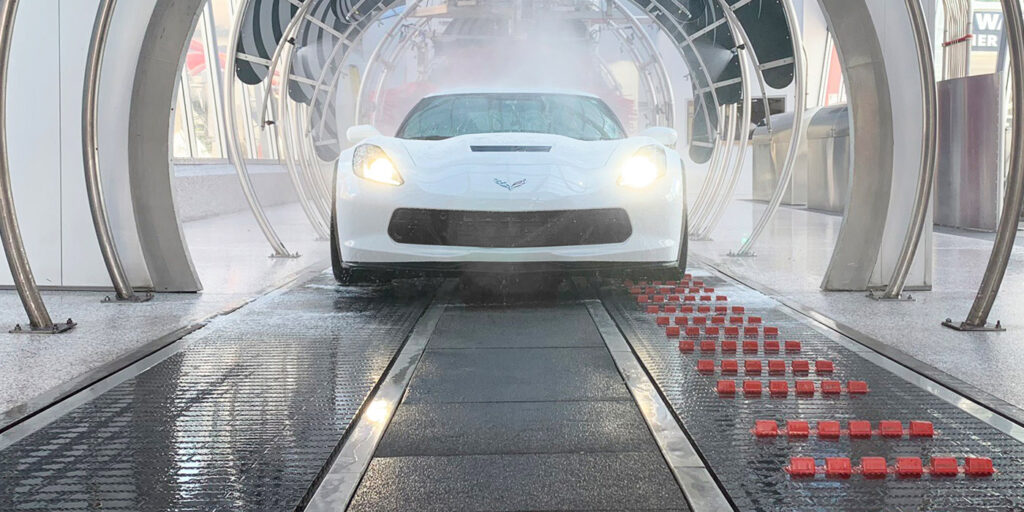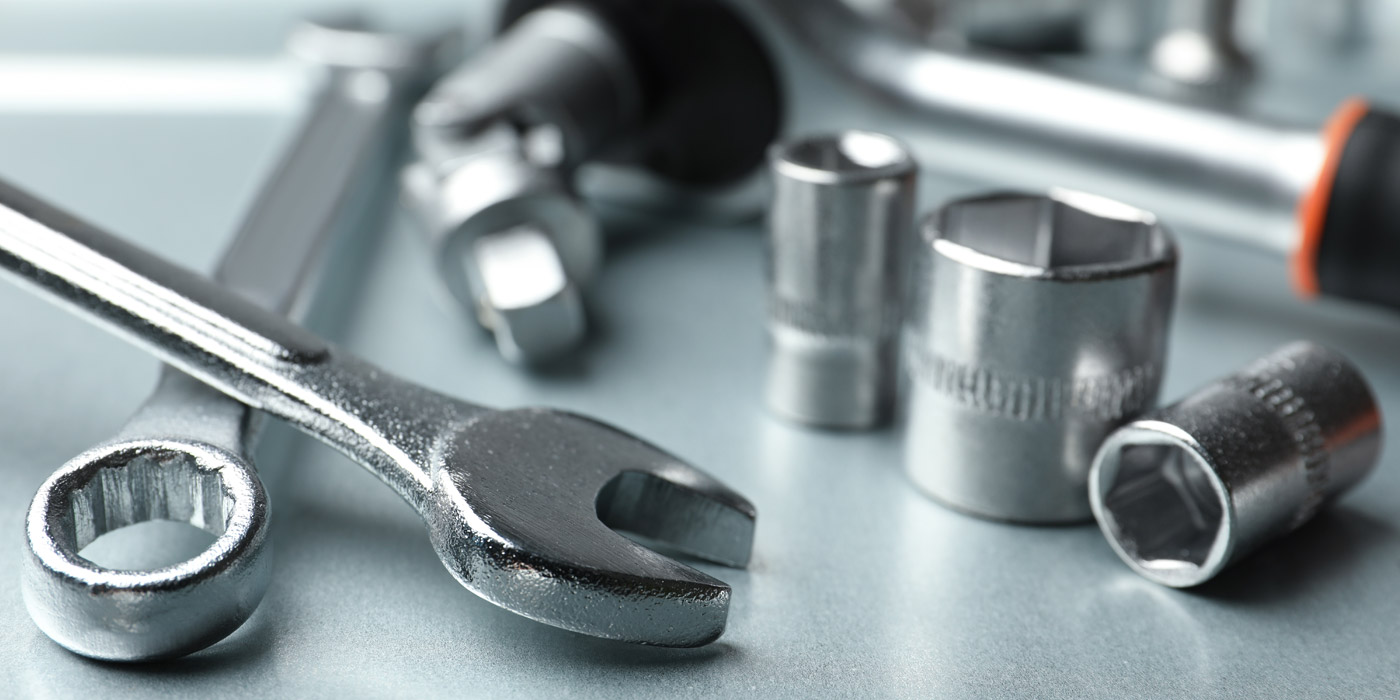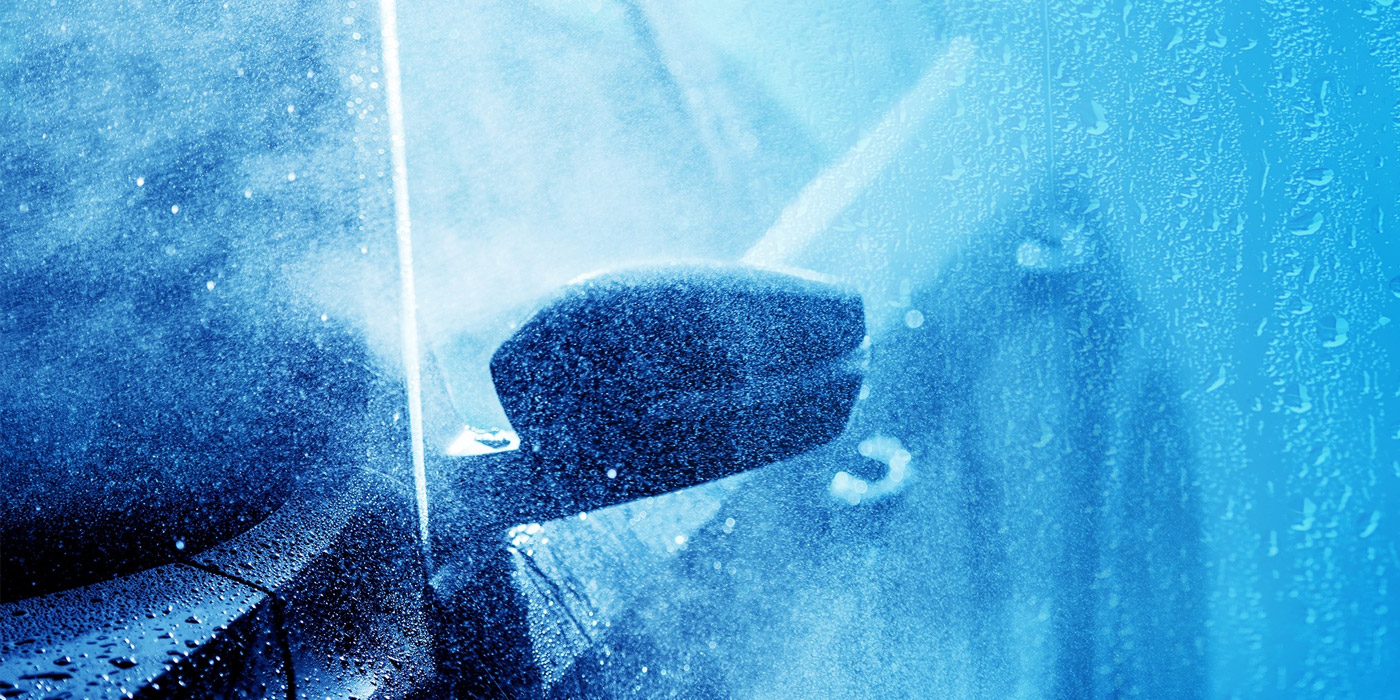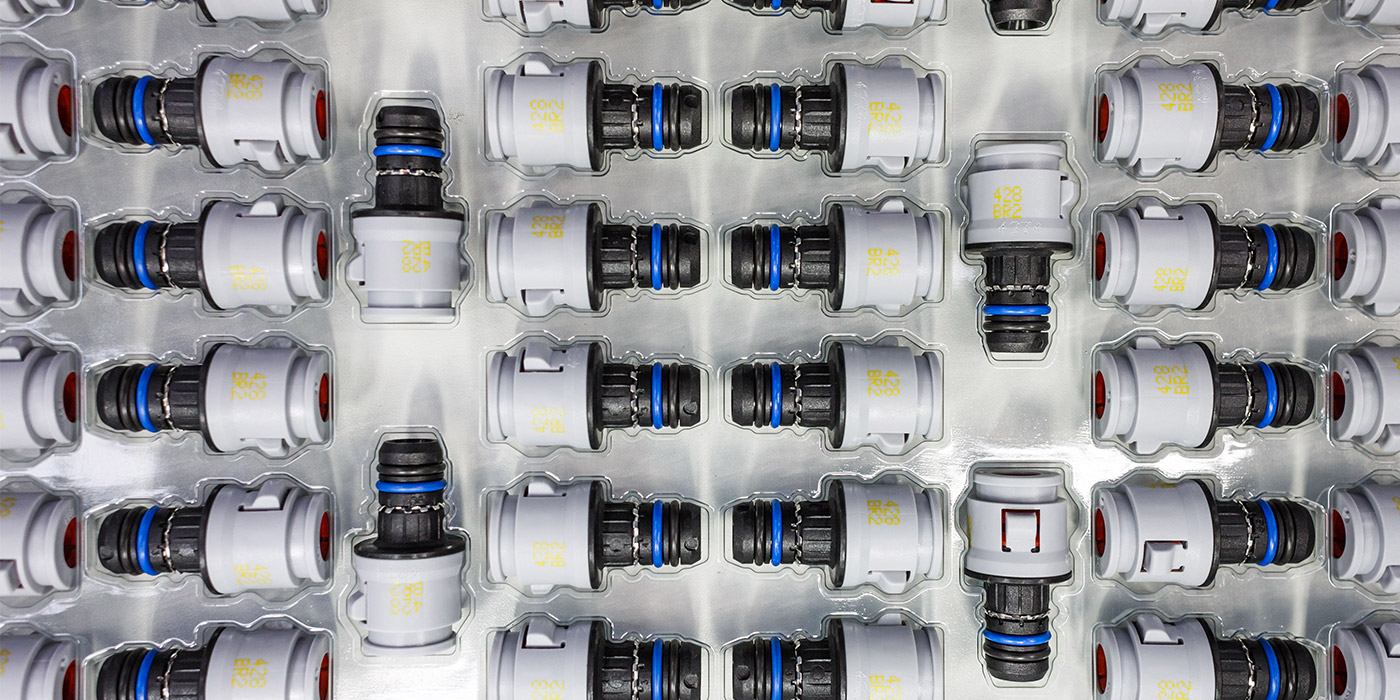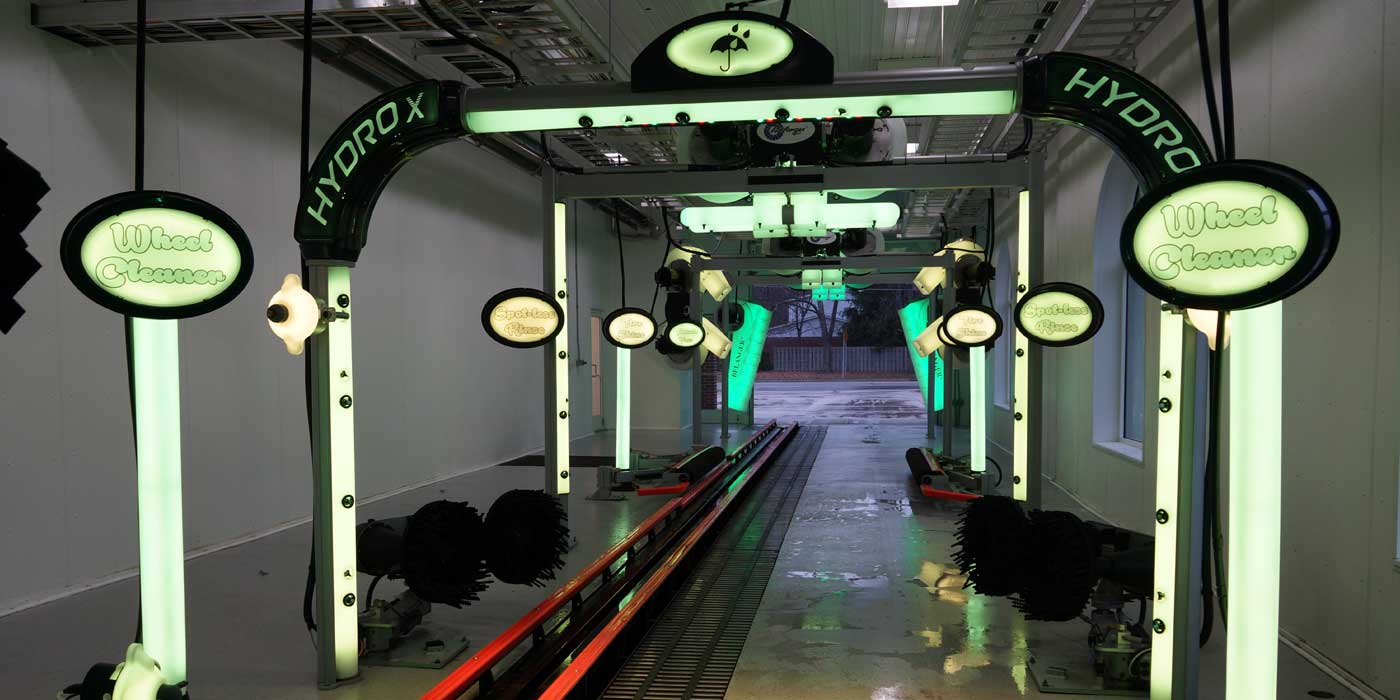Although conveyor belts have been in the market for a couple of decades now, they are becoming more prevalent on new builds, and customers and employees are starting to notice. As noted in the comments section under one of our popular YouTube videos on flat belt conveyors, “Went to a … carwash in Dawsonville, Georgia. The conveyor belts were the coolest thing I’ve ever seen in a carwash. So smooth,” writes one video viewer. Another viewer comments, “… working at many washes over seven years, I love to see flat belts are becoming more common as [the] wash industry is starting to modernize.”
Operators hear the feedback and see conveyor belts at more and more booths during our industry’s major trade shows, but can they stomach the cost of downtime to install and retrofit at existing sites as well as justify the increased initial and seemingly higher maintenance costs? And, what about other special considerations such as tire cleaning and tire shine if wheels aren’t rotating?
Over the past two decades since belts first entered the market, belt manufacturers have been working on solutions to overcome common application and installation concerns. They have also been working on improving the quality of components installed and engineering of the systems.
We spoke with some belt conveyor proponents for this article to see if the business of belts is right for you.
Market share
More belt conveyors are being installed today than ever before and one of the key drivers of this trend is the influx of new build express carwashes being erected these days. For reasons we will mention later in this article, new builds are ideal for the installation of belt conveyor systems if the operator decides to go that route from the start. In fact, making that decision before new construction begins is critically important.
Experts estimate that only about 3% of carwash tunnels in North America had belt conveyors installed a couple of years ago. Today, Rob Stephenson, president and CEO of STI Conveyor Systems, estimates that about 18% of new builds in America are choosing belt conveyors over chain and roller.
“As far as overall, we estimate that there are about 13,000 or so conveyor carwashes in the U.S. and there are about 700 belt conveyors installed, which puts our estimate at about 5% overall of tunnels with belts in the country today,” says Stephenson.
Others we spoke with for this article place that estimate a bit higher — as high as 10% — but concur that the emergence of the new build market is driving and elevating sales for belts these days.
“We see 100% of our new carwashes being built with belt conveyors and we no longer manufacture chain and roller conveyors,” reports Ryan Essenburg, founder and president of Tommy’s Express Car Wash.
According to Dave Iannacone, vice president of car wash systems and technology for Waterway Carwash, as new builds are installing more belts these days it’s important for new investors as well as veteran operators to take note of the ripple effects this trend will have on competition.
“The overall percentage of belts is still relatively low, but what is staggering is the rate at which that is changing. In new carwash builds, I estimate the ratio is 5 to 1, in favor of belts over chain and roller conveyors,” says Iannacone. “However, with so many new washes being built, the norm is quickly shifting. Operators with existing sites may need to make the switch to stay viable in the face of new competition.”
But, what does that switch look like? And, as inflation and supply challenges are currently taking a toll on businesses and consumers, many are also wondering about the costs.
To the pits
Those we interviewed for this article conceded that switchover costs for an existing facility can be high and also require weeks — as many as about three weeks — to remove a chain system and install a new belt system on an existing facility; in other words, significant downtime. This is why new builds are making the belt decision early and more often these days.
As Iannacone explains, operators must consider removing all the equipment, demo and repouring a wider pit. Depending on the manufacturer, you may also need days of cure time for that concrete before installing a belt and carwash equipment.
“It is even more difficult if you weren’t the original builder of the facility. It may be worth paying a private line-locate service to ensure drains, conduits or anything else unexpected doesn’t lurk just outside the previous carwash trench’s footprint,” advises Iannacone.
While Essenburg puts an estimate of about $170,000, plus a variable frequency drive control panel and plus shipping and installation, for a new dual belt system on an average tunnel length, costs can be elevated for existing sites to retrofit and make any needed repairs or upgrades associated with the conversion.
For operators of conveyor carwashes that fall outside of the average range of 100 to 120 feet, Stephenson offers an initial cost estimate of approximately 2.5 to 3 times the initial cost of the same length chain conveyor. He also adds that his company has yet to come across a site where the installation of a belt conveyor was not practical, noting they have installed systems at a 50-foot site and as high as a 202-foot site.
“For new builds, belts are a significant player today,” says Stephenson, adding that modern vehicle technology, such as ADAS, will put more pressure on operators and create a stronger retrofit market for belts in the coming years.
Still, operating a carwash is a business and if investors cannot realize a return on an investment, the case for installing belts is more difficult.
Belt business case
As noted at the start of this article, customers and employees see belt conveyors as “cool” and “modern,” and they offer that desired “wow” factor. But, what’s the business case? If operators and investors can’t tie increased dollars and cents to belt conveyors, installation doesn’t make much sense at all.
Even though belt conveyors in this market have been available for about two decades, more meaningful research is starting to come to the forefront as more locations install these systems. Stephenson offers insight into some research his company has been conducting with a large petroleum retailer in North America.
The subject of the study has 100 carwash sites with a mix of belt and chain and roller conveyor systems installed. Some sites, he adds, are within a three-mile radius of one another — therefore, same operator and similar customer bases.
“For the sites we studied, the minimum volume increase of the belt sites compared to the chain sites was 26% and the average volume increase was actually 89%. Additionally, the belt sites are charging $1 more per ticket so we believe belts are a huge competitive differentiator,” proclaims Stephenson.
Based on this research, Stephenson submits, considering all variables equal — same or similar level of customer service, great design, etc. — the installation of belts should lead to higher sales, higher volume and more loyalty over chain and roller sites.
“You might be able to charge $1 more than the competition and still have the same or even higher memberships and higher annual volume,” Stephenson reiterates.
Combine better margins with belt’s potential of higher throughput, easier loading and better guest experience, as example benefits, and it’s easier to convey an ROI. “We estimate that about a minimum of 20% increased throughput in cars per hour during peak hours is possible based on our company’s studies,” adds Stephenson.
Other considerations
When considering the installation of belts, operators should also be mindful of regular and preventive maintenance as well as eventual replacement of parts. Improvements are being made in the areas of material quality and engineering, minimizing maintenance and replacement costs as well as needs.
In order to keep them clean and properly functioning, workers should clean belts as often as weekly or monthly, depending on such factors as usage and local soiling types. Maintenance needs will vary based on site conditions, usage and the belt equipment selected.
Stephenson notes that belt maintenance can be significantly higher compared to chain and roller, but when looking at the big picture the gap isn’t as wide as it appears. A carwash may include the replacement of dolly wheels, bolts, bushings, chain links, etc., on a chain and roller system in a routine maintenance budget since it’s a little bit of maintenance fairly regularly.
“With a belt conveyor, it’s almost no regular maintenance, just cleaning, but when the consumables wear down, such as the belts, guide plates and sprockets, those tend to be fairly large maintenance jobs,” educates Stephenson, who estimates operators can expect costs to be 7 or 8 cents per car in harsher environments. “Overall, we’re seeing belt conveyors just as reliable and last just as long as the chain conveyors and operators are making more money with belts.”
If you’re making the decision to go the belt route, experts advise not being penny-wise and pound-foolish. Operators can maintain the longevity of the equipment once it’s installed and more importantly, they have control over the quality of the equipment selected at the time of purchase.
The emergence of belt conveyors in the market has led to increased manufacturer competition, leading to more and better choices for operators. Some belts in the market are lasting just 100,000 cars before needing replacement, which Stephenson calls “unacceptable.”
“We’ve had some belts that needed replacement after around the 500,000 car mark on the low side and on the high side we’re still conducting research but it’s well over 800,000 to 900,000 cars,” reveals Stephenson.
According to Essenburg, replacement of the plastic belt can be as soon as 400,000 cars and as high as 1,000,000 cars, depending on the cleaning schedule, upkeep of the equipment and soiling that is common to the area.
Some of the other factors an operator needs to consider are site design and tire cleaning since wheels do not rotate on a belt conveyor.
“Site conditions are not always ideal for a belt, specifically ones with a tight turning radius headed into a short carwash entrance, where a correlator is best to help pull the car into alignment,” says Iannacone.
Manufacturers and designers have also found solutions to tire cleaning and applying dressing when using belt conveyors.
“Since wheels do not rotate on the belt, consider shortening your carwash trench if you have tire dressing applicators in the middle of your blowers. If you were running rear-wheel-push, the tunnel layout kind of just shifts to the entrance to accommodate that change. On a belt, you just need your front wheels on as opposed to all the way on the track with the rear tire past the trap door,” continues Iannacone, adding that the loading belt versus no loading belt is a bigger consideration. “That can be a big shift for staff and customers. Without a loading belt, you won’t have the same entrance flexibility for customers who may not be ready or comfortable as you do with a roller-on-demand system. With a loading belt, much is the same, but with the added complexity of additional frames and motors.”
While the market currently lacks wide availability of friction-based wheel cleaning systems specifically for belt conveyors, operators are using a combination of chemical application and high pressure with good results. As for tire shine, traditional equipment is being deployed where belts are installed. This equipment is typically installed at the exit area where vehicles roll off the belt and wheels rotate.
Stephenson estimates about 75% of the new builds with belts his company has worked with have tire shine. In order to fit in tire shine, however, design modifications are required. “If you’re operating a 120-foot tunnel, for example, where traditionally a chain would run essentially door to door, with a belt you’re actually going to be running about a 108-foot belt and then the last 12 feet or so is where you would put the tire shine,” he notes.
As time passes, improvements are expected in the areas of installation time, maintenance needs and costs, equipment and system quality, and tire cleaning and shine. In the meantime, operators who are not looking to make the switch should understand what they are up against. The roller and chain has been a fixture in tunnel carwashing for many decades. And, while the system has served the industry well and continues to do so, customers and employees could see it as old technology moving forward as belts emerge on more and more new build express washes that continue to change the face of the wash segment.
“Belts are strictly about customer experience and executing a distinguished customer experience is always hard and expensive,” concludes Iannacone.
In the belt business, it takes money to make money.
Looking for more insight on the belt conveyor system market? Check out our video interview with AutoBrite Co.’s Lawrence Stovall below.

